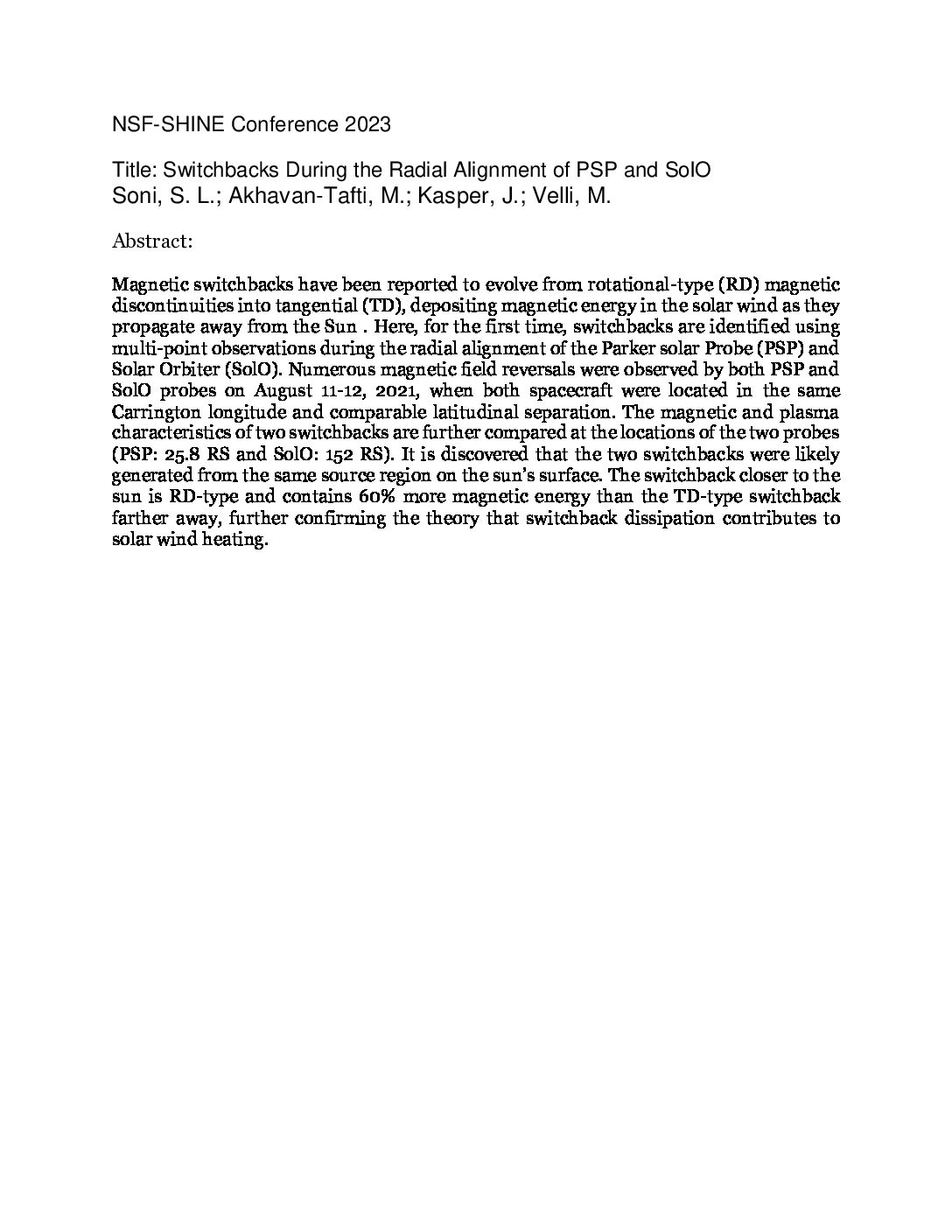Authors: Soni, S. L.(CLaSP, University of Michigan), Akhavan-Tafti, M.(CLaSP, University of Michigan), Kasper, J.C.(CLaSP, University of Michigan), Velli, M.(Department of Earth, Planetary, and Space Sciences, University of California, Los Angeles, CA, USA)
Magnetic switchbacks have been reported to evolve from rotational-type (RD) magnetic discontinuities into tangential (TD), depositing magnetic energy in the solar wind as they propagate away from the Sun . Here, for the first time, switchbacks are identified using multi-point observations during the radial alignment of the Parker solar Probe (PSP) and Solar Orbiter (SolO). Numerous magnetic field reversals were observed by both PSP and SolO probes on August 11-12, 2021, when both spacecraft were located in the same Carrington longitude and comparable latitudinal separation. The magnetic and plasma characteristics of two switchbacks are further compared at the locations of the two probes (PSP: 25.8 RS and SolO: 152 RS). It is discovered that the two switchbacks were likely generated from the same source region on the sun’s surface. The switchback closer to the sun is RD-type and contains 60% more magnetic energy than the TD-type switchback farther away, further confirming the theory that switchback dissipation contributes to solar wind heating.


